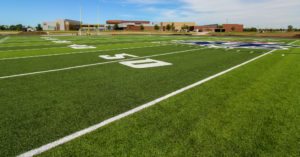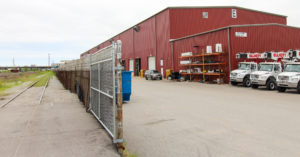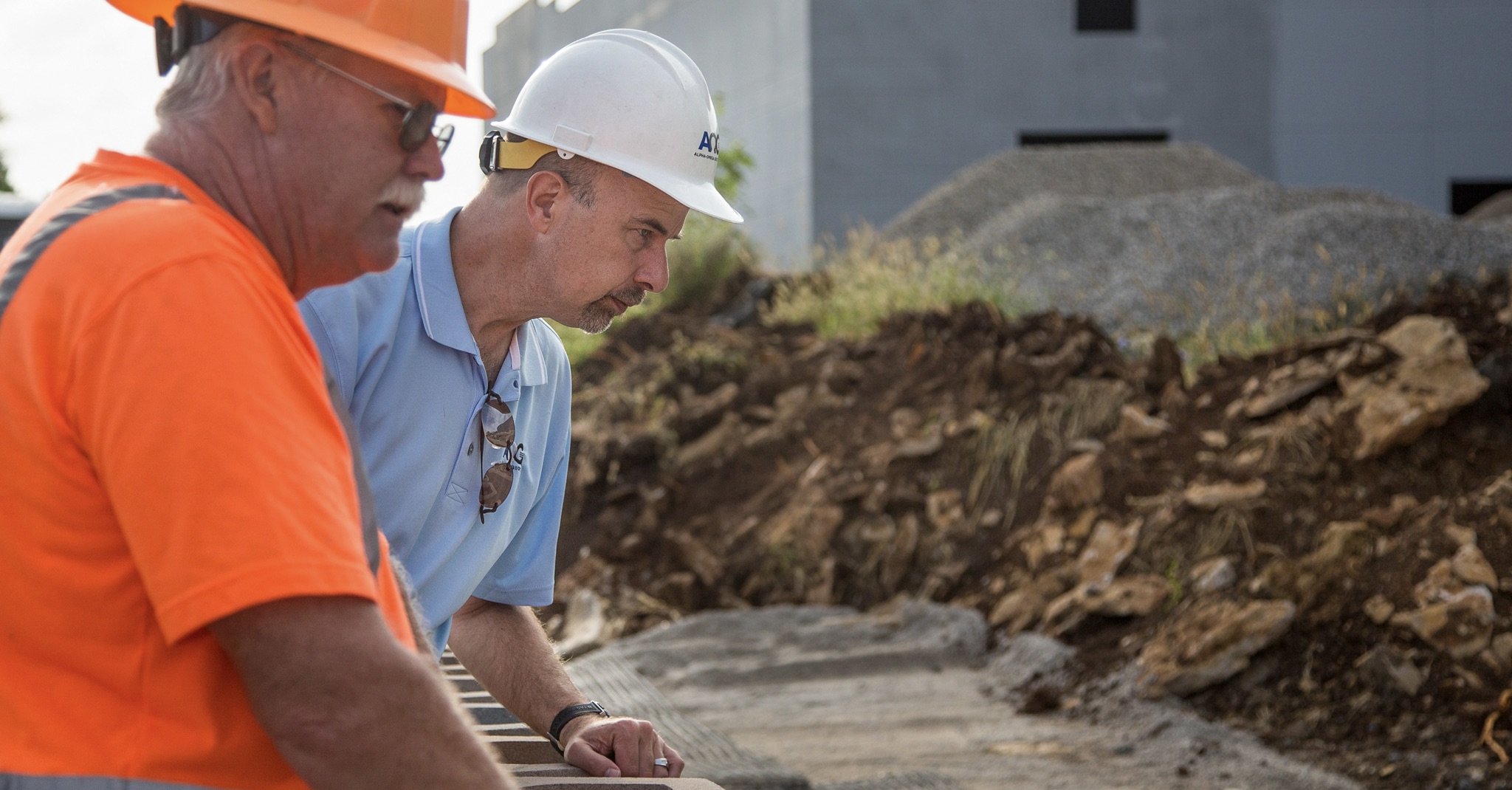There’s more than one way to achieve the goals of a construction project, starting with the ground it’s built on. But the usual planning pressures often push builders down the usual paths toward the usual decisions. Here are three typical assumptions that can take smarter ideas off the table.
ASSUMPTION 1: Untouched Land is Always a Top Priority.
Virgin, predictable subgrade. What could be better? The problem is the number of acres that fit that profile can be extremely small and you may face stiff competition acquiring them. A rush to judgment in site selection can mean overlooking valuable opportunities. Don’t assume land that’s been through changes over the years isn’t worth repurposing. A complicated subgrade won’t necessarily break your budget or take longer to develop if you partner with geotechnical engineers and other construction pros who know the area well.
For example, the massive Meritex Lenexa Executive Park could have been located on a number of sites perfect for industrial development, but an abandoned limestone mine near K-10 highway offered the unique chance to develop expansive space both underground and on the surface.

Finishing up on surface buildings 1 & 2 at Meritex Lenexa Executive Park.
St. James Academy could have assumed that transforming imperfect land just outside the school building into a professional-grade athletic field would be far too expensive. But creative geotechnical strategies overcame the sloping elevation problem and layers of buried trees, gravel roads and an old farm pond.

The professional grade multipurpose field at St. James Academy in Lenexa.
And Custom Truck One Source certainly browsed more attractive sites than the industrial brownfield in Kansas City’s Blue Valley Industrial Corridor, but imagined valuable new purpose for everything from towering old steel mill structures to abandoned train tracks where the company now tests rail trucks before shipment.

Custom Truck One Source even makes use of the old train tracks nearby.
Ask any of those project owners and others, and you’ll hear no regrets. They carefully selected construction teams who worked closely together to navigate the complicated, the difficult and the unknown. The projects didn’t turn into money pits or limp along painfully long timelines, and many earned praise as impressive achievements.
ASSUMPTION 2: There’s Only One Good Way to Get Your Project Out of the Ground.
Geotechnical contractors focused only on the quick accumulation of large project portfolios often skip past valuable opportunities within each project. Their aggressive pursuit of volume can translate to a rigid pattern of overly conservative recommendations that ignore smarter ideas. Simple, cookie-cutter approaches often amount to inefficient, expensive luxuries that push budgets and timelines into painful territory.
Deciding how to manage subgrade material that’s less than ideal should involve more than a snap judgment. What’s sometimes seen as the ‘easy’ solution – remove and replace – is not always the most economical solution. And the most economical solution is not always the best solution. The right approach at each build site often lies somewhere in between.
Seasoned geotechnical engineers will turn their experience into creativity, and put their heads together with project team leaders to explore alternative solutions using available material. Even complicated site conditions can be sorted out and shaped into a smart subgrade strategy for achieving project goals.

Soil riddled with industrial relics and decades of unknowns? Exporting is not the only answer.
The presence of non-uniform rock shouldn’t immediately trigger anxiety. Experienced geotechnical pros will enthusiastically embrace situations involving variations ranging from shallow limestone bedrock to wildly inconsistent rocky fill. They’ll be motivated by the challenge and eager to search for ways to effectively engineer what they have to work with.
And there are other support platform options outside of the usual piers drilled down to deep bedrock. Geotech experts with a diverse track record will consider alternatives for establishing strength and stability beneath a structure, such as a snowshoe-like geogrid-reinforced platform not far from the surface, or geopiers at intermediate depths.
ASSUMPTION 3: Special Inspections Are a Separate Search for the Lowest Bid.
The Special Inspections that validate, confirm and inform the precise execution of construction plans should not be seen as a commodity delivered by just anyone who qualifies. Splitting off Special Inspections from your project’s geotechnical engineering partner can bring more problems than cost savings.
Creative geotechnical solutions depend heavily on the constant collaboration of geotechnical engineers and the inspection technicians they trust to manage the execution of their ideas. Engineers and field technicians should work closely as a single team to keep processes and communication focused every step of the way, especially when solutions are advanced and complex.

Special Inspections technicians should work closely with geotechnical engineers.
There’s also the fact that different geotechnical firms view project data differently. Where one firm may see impossibility, another firm may see potential. Plus, coordinating the interpretation and understanding of key information when a geotechnical team hands off to a different inspections team can be very difficult. Confusion, conflict and red tape can easily erase low bid cost savings on a spreadsheet.
Variations in staffing practices make things even more complicated. Different geotechnical firms staff projects differently. Engineering solutions that depend on multiple, experienced technicians working simultaneously on various aspects of a project may wind up in the hands of a firm that dispatches a single, inexperienced technician who struggles and slows progress.
Reality Check: Each Project Can Uncover a Unique Opportunity
While there are many aspects of construction that are run of the mill and should stay that way, getting too entrenched in default thinking can block better uses of skill, materials, time and money. Each project should be seen as a unique opportunity that starts with the land. Carefully choosing a site and then engineering it to be a precise match for specific goals should always be seen as custom work. Getting the entire construction puzzle exactly right begins with the first piece falling perfectly into place, along with peace of mind knowing you’re giving it your best shot.

